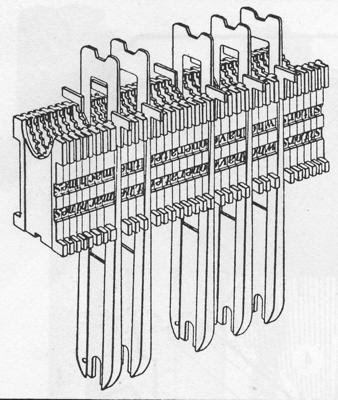
In his youth Eato ik’olkjjjjjjF fhkm wqlKJNU ,.,2., IUYK,LK JKK;ok
The Holmfirth Typographical Society would like to apologise for this article, which, as you will no doubt have realised by now, is complete nonsense. The perpetrator has clearly been at the turpentine again. Normal service will be resumed just as soon as we get a new lock on the typewriter case.

Right, where was he? Etaoin Shrdlu, or rather, as it was wont to appear, either ETAOIN SHRDLU or etaoin shrdlu. These were the letters as arranged on a linotype keyboard:

[click on the image to see a bigger version]
Now when you’re typing at a linotype machine, as I’m sure you’re aware, you can’t correct a mistake, you have to go through the business of casting a whole line, then eject the hot slug with the mistake in it. If a mistake is made at the beginning of a line the operator would simply run their finger down the keys on the left hand side of the keyboard and PRESTO! etaoin shrdlu would be cast along with the mistake. If the slug wasn’t ejected a proof reader could easily spot etaoin shrdlu in the galley. But, such is the nature of human error, they would sometimes miss it and ETAOIN SHRDLU get through into the paper.
Indeed this happened so much that it got appears in dictionaries. Here it is in our copy of the Random House Dictionary of the English Language [unabridged]:





